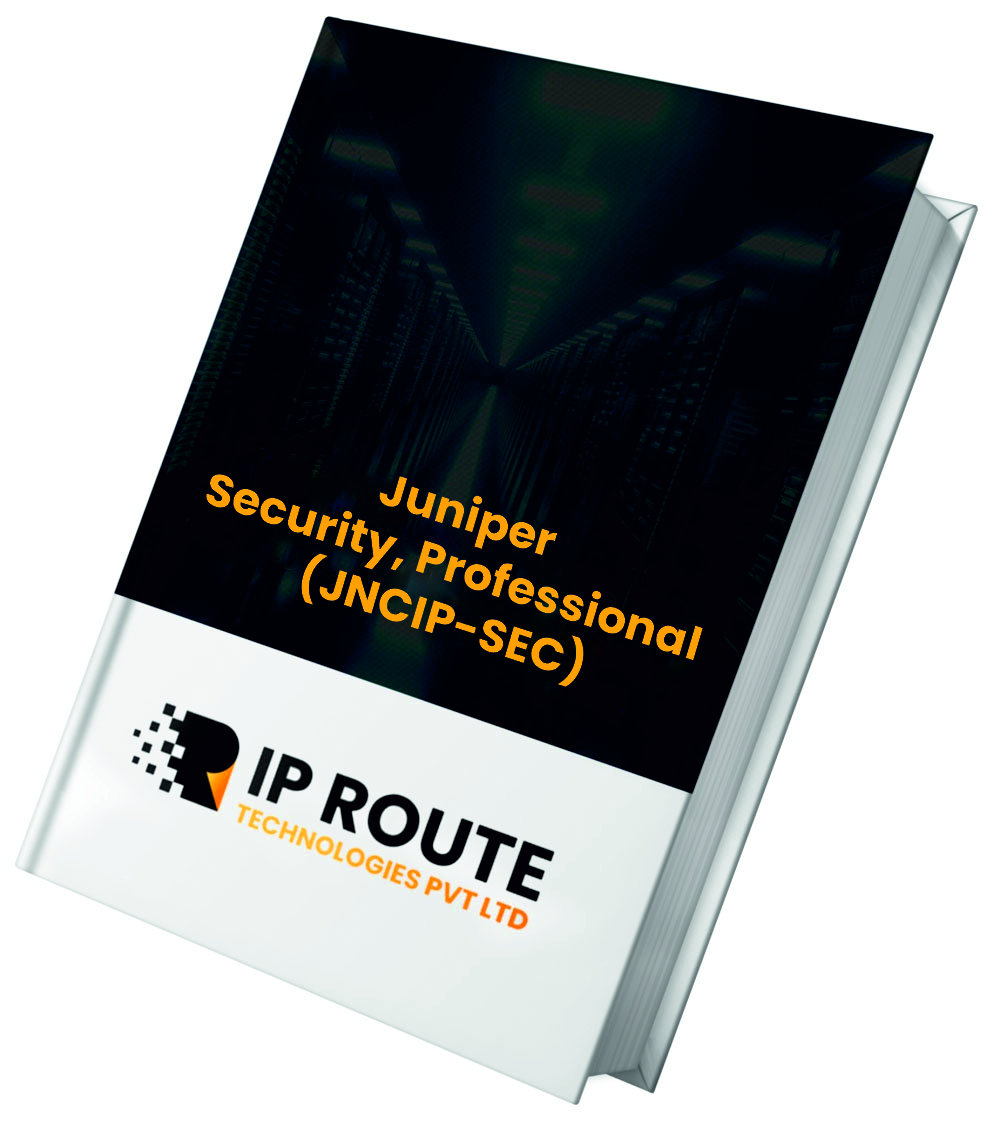Description
Course Summary
JNCIP-SEC-TOPICS
Here’s a high-level view of the skillset required to successfully complete the JNCIP-SEC certification exam.
- Describe the concepts, operation, or functionality of firewall filters:
- Selective packet processing
- Troubleshooting with firewall filters
- Filter-based forwarding
- Given a scenario, demonstrate how to configure, troubleshoot, or monitor firewall filters:
- Troubleshooting Security Policy and Zones
- Tools
- Logging/tracing
- Other outputs
- Describe the concepts, operation, or functionality of Juniper Advanced Threat Prevention (on-premises appliance or Cloud-based service):
- Collectors
- Custom rules
- Mitigation
- Given a scenario, demonstrate how to configure or monitor Juniper Advanced Threat Prevention.
- Describe the concepts, operation, or functionality of edge security features:
- Hardware support
- Security Intelligence (SecIntel)
- Intrusion prevention system (IPS)
- Corero DDoS Mitigation
- Advanced threat prevention (ATP)
- Describe the concepts or operation of security compliance:
- Role-based access control (RBAC)
- Junos Space® Security Director
- Authentication, Authorization, and Accounting (AAA) and Security Assertion Markup Language (SAML) integration
- Describe the concepts, operation, or functionality of threat mitigation:
- Malware identification or mitigation
- Malicious lateral traffic identification or mitigation
- Zero trust microsegmentation
- Given a scenario, demonstrate how to configure or monitor threat mitigation.
- Describe the concepts, operation, or functionality of the logical systems:
- Administrative roles
- Security profiles
- Logical systems (LSYS) communication
- Describe the concepts, operation, or functionality of the tenant systems:
- Master and tenant admins
- Tenant systems (TSYS) capacity
- Describe the concepts, operation, or functionality of Layer 2 security:
- Transparent mode
- Mixed mode
- Secure wire
- Media Access Control Security (MACsec)
- Given a scenario, demonstrate how to configure or monitor Layer 2 security.
- Describe the concepts, operation, or functionality of advanced NAT functionality:
- Persistent NAT
- Domain name system (DNS) doctoring
- IPv6 NAT
- Given a scenario, demonstrate how to configure, troubleshoot, or monitor advanced NAT scenarios.
- Describe the concepts, operation, or functionality of advanced IPsec applications:
- Remote access VPNs
- Hub-and-spoke VPNs
- Public Key Infrastructure (PKI)
- Auto Discovery VPNs (ADVPNs)
- Routing with IPsec
- Overlapping IP addresses
- Dynamic gateways
- IPsec class of service (CoS)
- Given a scenario, demonstrate how to configure, troubleshoot, or monitor advanced IPsec functionality.
Schedule & Pricing
Please write to us at [email protected] for the price and upcoming schedule.
What Our Customers Say
I would like to thank IP Route and their team members because they are doing an outstanding job in serving people who have an ambition of getting into networking field as compared to others. Hands down the best choice for CCIE Infrastructure v1.1. Looking forward to enroll for more courses and recommend others.
Trainers at IP Route are super professional & friendly. Their labs are up to date and provide 24/7 support. I enrolled for CCIE Enterprise and my journey was amazing. If you are looking to start your journey in networking you should definitely choose IP Route.
Trainers at IP Route are super professional & friendly. Their labs are up to date and provide 24/7 support. I enrolled for CCIE Enterprise and my journey was amazing. If you are looking to start your journey in networking you should definitely choose IP Route.
My Journey with IP Route was awesome and the trainers are so knowledgeable the coaching style is convenient and easy. They helped me clear my doubts anytime I wanted with the best explanation to every topic. They guided me really well to clear my CCIE Enterprise lab exam, 5/5
Awesome experience:
Updated Labs, Great Support, Professional trainers, Overwhelming after sales support, Best CCIE
Updated Labs, Great Support, Professional trainers, Overwhelming after sales support, Best CCIE
I cleared my CCIE Enterprise with the guidance of IP Route and their mind-blowing training. I heard about IP Route through one of my friend and I’m glad I took his advice and enrolled myself, received the best training from the best instructors
Thankyou so much IP Route for guiding me from what to choose to today achieving my CCIE number. I passed my CCIE Enterprise exam only with the help of IP Route. They have the best hands-on lab which prepared me really well for my final exam. Would definitely recommend it to others.
Best institute to learn networking. The trainers are skilled and have really good communication. Also they provide lab facilities and even address any queries at any time of the day. The course fee is pocket friendly and have flexible payment methods with is great for a fresher too.


